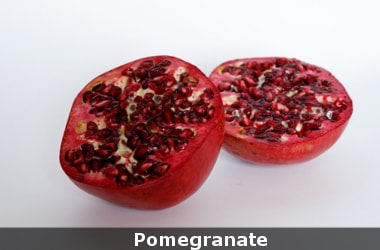
IIT Madras has won the BIRAC Gandhian Young Technological Innovation (GYTI) Award 2017 for its work on producing white light emission using natural extracts.
Scientists from the Department of Chemistry, IIT Madras used a mixture of two natural extracts - red pomegranate and turmeric - to produce white light emission.
The researchers used a simple and environment-friendly procedure to extract dyes from pomegranate and turmeric.
While polyphenols and anthocyanins present in red pomegranate emit at blue and orange-red regions of the wavelength respectively, curcumin from turmeric emit at the green region of the wavelength.
White light emission is produced when red, blue and green mix together.
This is probably the first time white light emission has been generated using low-cost, edible natural dyes.
By changing the concentration of the two extracts the researchers were able to get different colour temperature (tunability).
When the two extracts and irradiate it with UV radiation at 380 nm, scientists observed energy transfer (FRET mechanism) taking place from polyphenols to curcumin to anthocyanins, which helps to get perfect white light emission.
For FRET mechanism to take place there must be spectral overlap between the donor and acceptor.
In this case, there is a perfect overlap of emission of polyphenols with absorption by curcumin so the energy from polyphenols is transferred to curcumin.
Since there is also a perfect overlap of emission of curcumin with absorption by anthocyanin, the energy of curcumin is transferred to anthocyanin.
As a result of this energy transfer from one dye to the other, when the extract is irradiated with UV light at 380 nm (blue region of the wavelength), the polyphenols emit in the blue region of the wavelength and transfers its energy to curcumin.
The excited curcumin emits in the green region of the wavelength and transfers its energy to anthocyanin, which emits light in the red region of the wavelength.
Scientists carbon nanoparticles using pomegranate and to their surprise it was producing fairly green emission.
So instead of using turmeric to get green wavelength, the researchers used carbon nanoparticles made from pomegranate extract. “
Though this natural mixture of dyes can be used in a wide variety of applications such as tunable laser, LEDs, white light display, much work needs to be done in terms of photostability and chemical stability before it becomes ready for translation.
Biosystems have an inherent tendency to breakdown and so this has to be addressed.